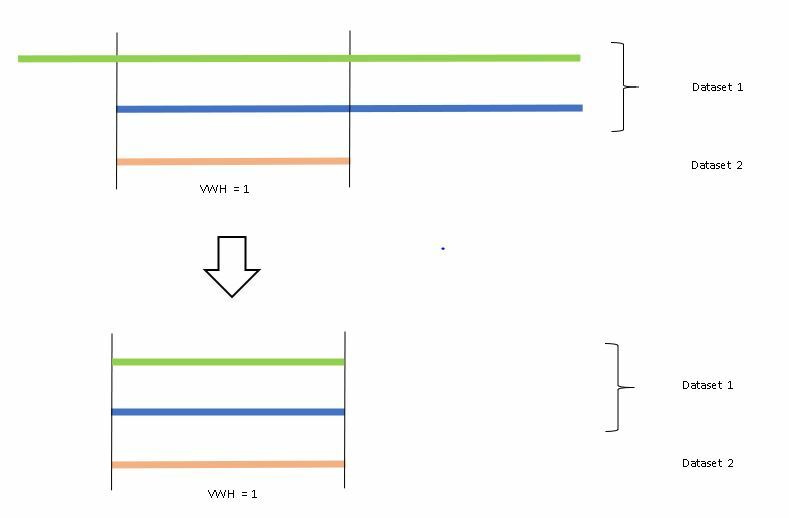First dataset
I created about 1 million lines between 1565 points. These points are locations and the lines are possible routes over a network between the locations. Many of these lines (=routes) overlap each other. This is my first dataset.
Second dataset
My second dataset consist also of lines. Part of these lines have an attribute value for attribute 'VWH' = 1. The other lines have a value of 0, VWH = 0.
Analysis
What I want to do now is to perform an intersection between the first and second dataset. For the second dataset the features are used where VWH = 1. Using the VWH =1 features I want to intersect dataset 1 and attach the VWH value to overlapping lines. See the figure below for the main idea.

First I dissolved dataset 2, for VWH =1, into one multipart feature using the LineCombiner followed by the Aggregator. The length of this multipart line feature is 7684 km.
Then I used a SpatialFilter to check which features of dataset 1 intersect the multipart feature.
Then I tried different transformers like LineOnLine, Buffer on dataset 2 + Clipper for the intersection operation. However, they all took quit a long time to process just using the first 5000 features of dataset 1. Any ideas how to solve this task?
My FME workbench till so far is attached as attachment.





